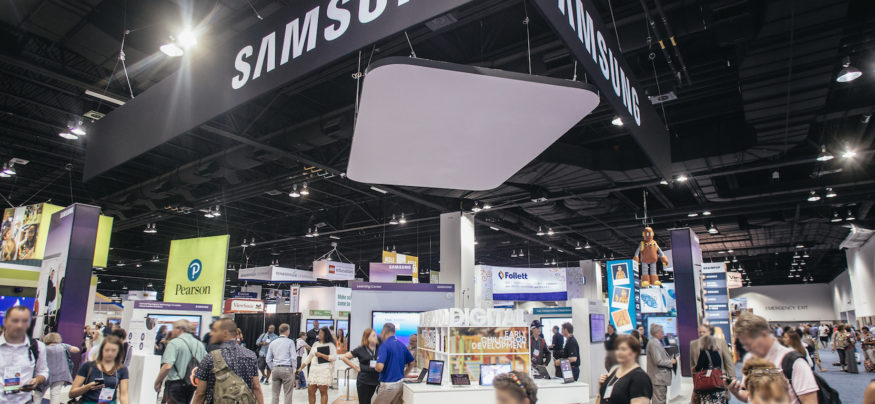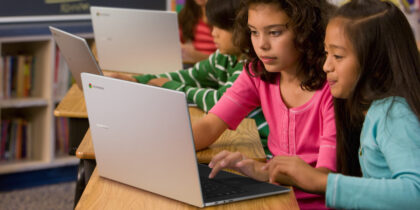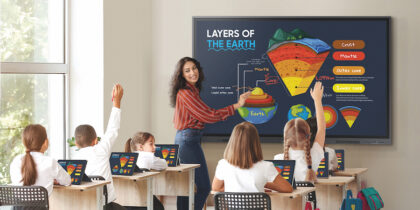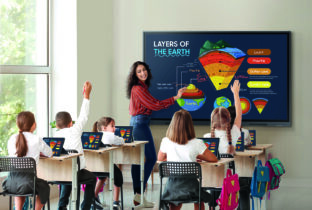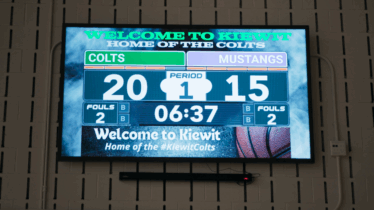Nearly 20,000 educators, administrators and industry representatives from more than 70 countries convened in Denver, Colorado from June 26–29 for ISTE 2016, the world’s premier ed-tech conference, hosted by the International Society for Technology in Education.
Here are three key takeaways from the event.
1. Schools must release more control to their students.
A recurring theme at ISTE 2016 was how technology can empower students — but only if educators let them take ownership of their own learning.
“Make sure your students fail,” said Jennie Magiera, chief technology officer for School District 62 in Des Plaines, Illinois. Her advice might sound strange, but it began to make sense when she described some of the mistakes she made as a first-year teacher several years earlier.
“I spent all of my time making anchor charts, because I didn’t want my students to fail,” she said. “I had all of these different scaffolds, and every moment in my classroom was scripted.” But she soon realized she was over-supporting her students, rather than letting them learn and explore for themselves.
To emphasize her point, Magiera showed a video of a two-year-old having trouble blowing out his birthday candle. Rather than blowing the candle out for his son, the father comes up with a creative solution — and the child’s reaction is priceless when he finally succeeds.
“Would that child have had that ‘wow’ moment if the dad had blown out the candle for him?” she asked. “Probably not.”
2. Traditional literacy is still critical — but it’s not the only literacy that matters.
Award-winning actor LeVar Burton, host of the children’s TV show Reading Rainbow, described how his own love for reading stemmed from his mother, who was an English teacher. “In our house, you either read a book or you got hit in the head with one,” he joked.
But these days, “we need to give our children literacy in more than just reading and writing,” Burton said, noting that it’s essential for students to become literate in using technology, media and information as well.
To support the need for these new literacies, ISTE has updated its Standards for Students. These define the 21st-century skills that students should learn, with examples of how the standards can be implemented at various grade levels.
With regard to traditional literacy, a number of companies discussed new ed-tech solutions designed to help children learn to read. For instance, Burton discussed how the new Reading Rainbow app reimagines the show for the digital age, exposing students to a carefully curated library of digital books and field trips — combining both literary and real-world experiences. And Samsung announced a new comprehensive solution called the Samsung Literacy Lab, which pairs Samsung Chromebooks or Galaxy tablets with an innovative literacy curriculum from Pearson.
3. Virtual reality is poised to make a big impact in education.
While only 2 percent of teachers say they’ve used virtual reality in the classroom, three out of five educators are interested in making it part of their students’ learning experience, according to a survey of more than 1,000 educators that Samsung released during the ISTE conference. Although virtual reality is still a relatively new technology, teachers nationwide recognize its potential to enhance instruction — and their enthusiasm was reflected in the number of ed-tech companies demonstrating VR-related solutions at ISTE 2016.
Samsung’s Gear VR drew heavy interest among conference attendees. A head-mounted display that’s compatible with Galaxy phones, the Gear VR allows students to experience virtual field trips and other content with immersive, 360-degree panoramic views.
Samsung’s survey, conducted by market research firm GfK, revealed that 86 percent of teachers think it’s a challenge to keep students engaged in the curriculum, even with existing classroom technology. Ninety-three percent of teachers feel their students would be excited to use virtual reality, and 83 percent believe it can help improve learning outcomes — from better understanding of academic concepts to increased engagement and collaboration. According to the survey, science (82 percent), social studies (81 percent) and history (81 percent) are the top three subjects that teachers think can benefit from virtual reality.
Seventy-two percent of teachers want to simulate experiences that are relevant to their course content, such as “flying as the Wright Brothers did in 1903 or trading stocks on the floor of a stock exchange.” Sixty-nine percent say they’d use virtual reality to travel to distant world landmarks, such as Stonehenge or Machu Picchu, and 68 percent want to use the technology to explore otherwise inaccessible locations, like outer space or the interior of a volcano.
You can see more of the exciting innovation showcased at ISTE by viewing the event’s Storify page.
Find out about the strong impact VR can have in the classroom, particularly in STEM learning.
